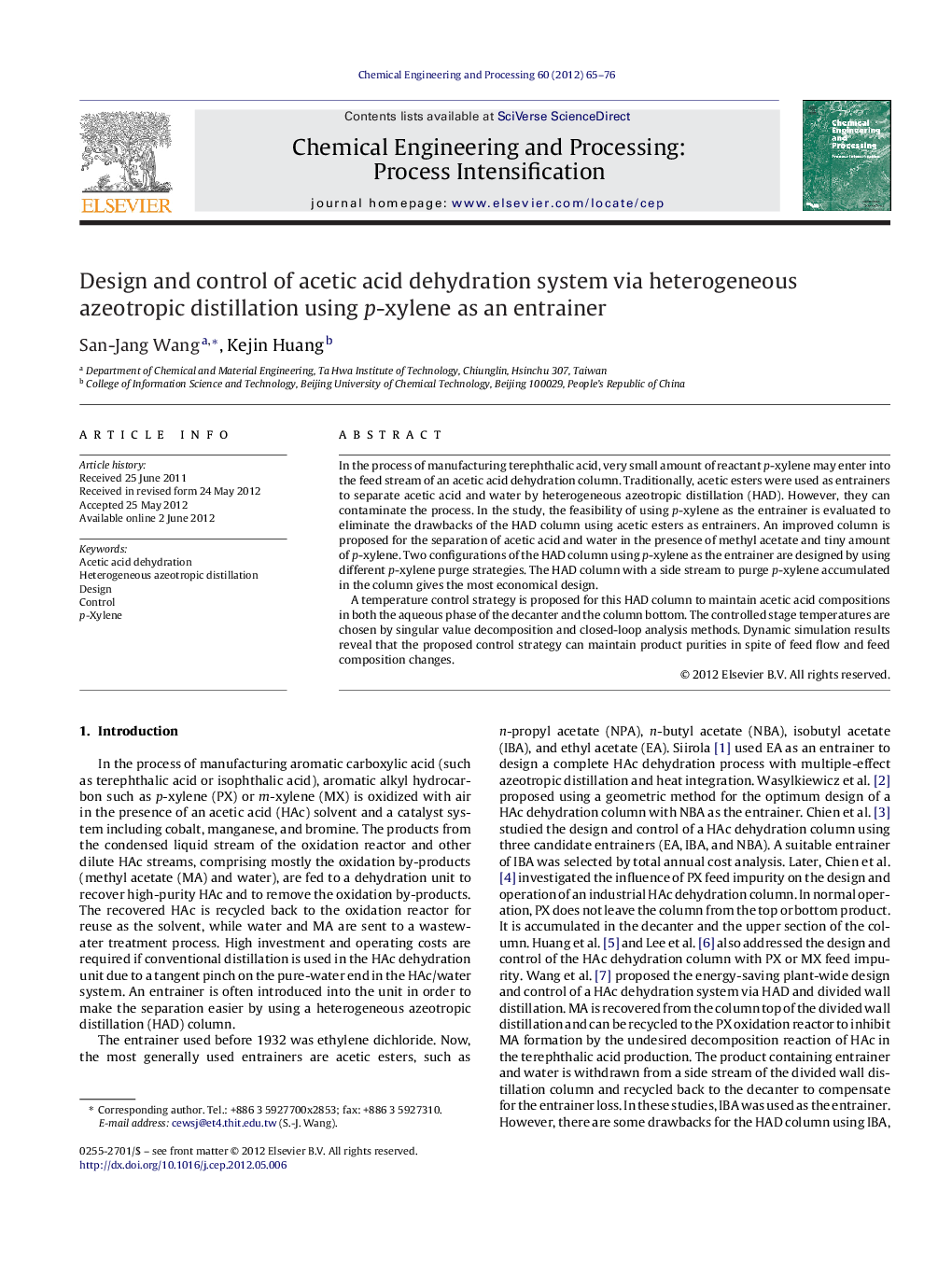| Article ID | Journal | Published Year | Pages | File Type |
|---|---|---|---|---|
| 688305 | Chemical Engineering and Processing: Process Intensification | 2012 | 12 Pages |
In the process of manufacturing terephthalic acid, very small amount of reactant p-xylene may enter into the feed stream of an acetic acid dehydration column. Traditionally, acetic esters were used as entrainers to separate acetic acid and water by heterogeneous azeotropic distillation (HAD). However, they can contaminate the process. In the study, the feasibility of using p-xylene as the entrainer is evaluated to eliminate the drawbacks of the HAD column using acetic esters as entrainers. An improved column is proposed for the separation of acetic acid and water in the presence of methyl acetate and tiny amount of p-xylene. Two configurations of the HAD column using p-xylene as the entrainer are designed by using different p-xylene purge strategies. The HAD column with a side stream to purge p-xylene accumulated in the column gives the most economical design.A temperature control strategy is proposed for this HAD column to maintain acetic acid compositions in both the aqueous phase of the decanter and the column bottom. The controlled stage temperatures are chosen by singular value decomposition and closed-loop analysis methods. Dynamic simulation results reveal that the proposed control strategy can maintain product purities in spite of feed flow and feed composition changes.
► p-Xylene is evaluated as an entrainer in a HAD column for the separation of acetic acid and water. ► Two configurations of the HAD column using p-xylene as the entrainer are designed by using different p-xylene purge strategies. ► The HAD column with a side stream to purge p-xylene accumulated in the column gives the most economical design. ► The control strategies using temperature loops are proposed for the HAD column. ► The proposed control strategy can maintain product purities in spite of feed flow and feed composition disturbances.
